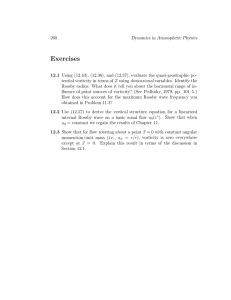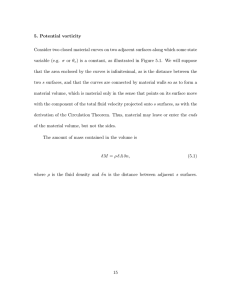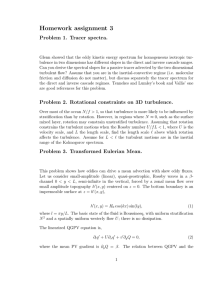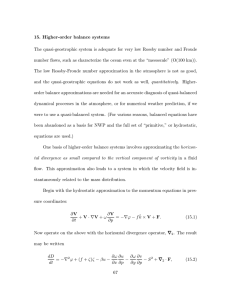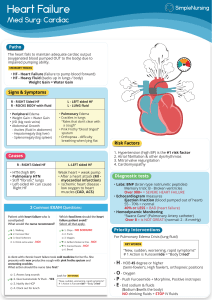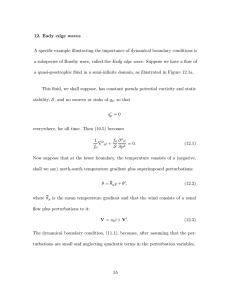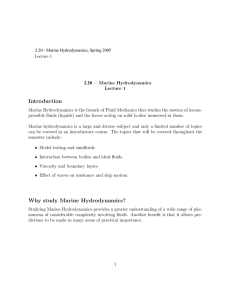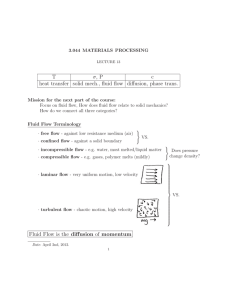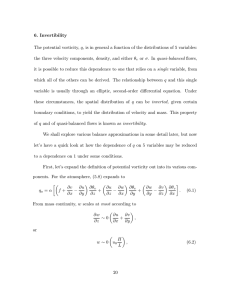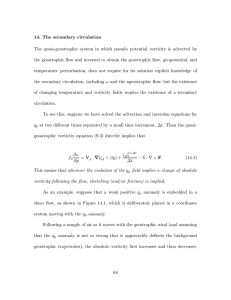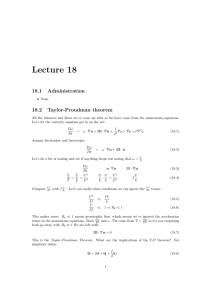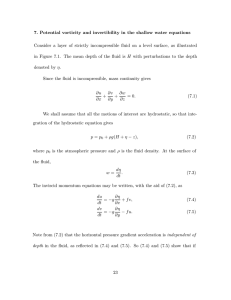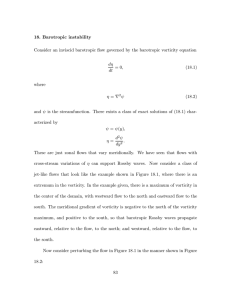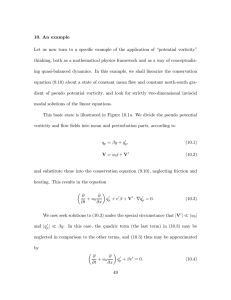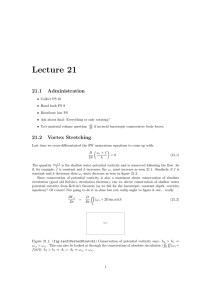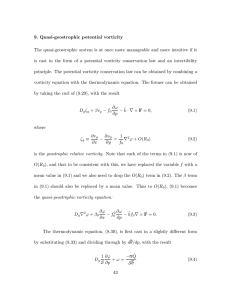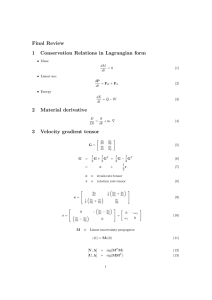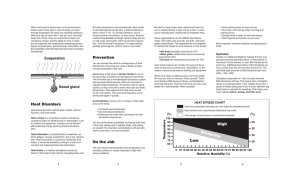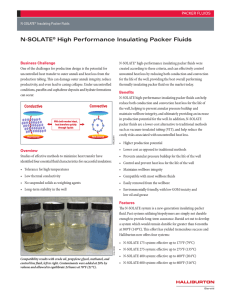7.2 Vorticity in inviscid rotating fluids – Taylor -Proudman theorem
advertisement
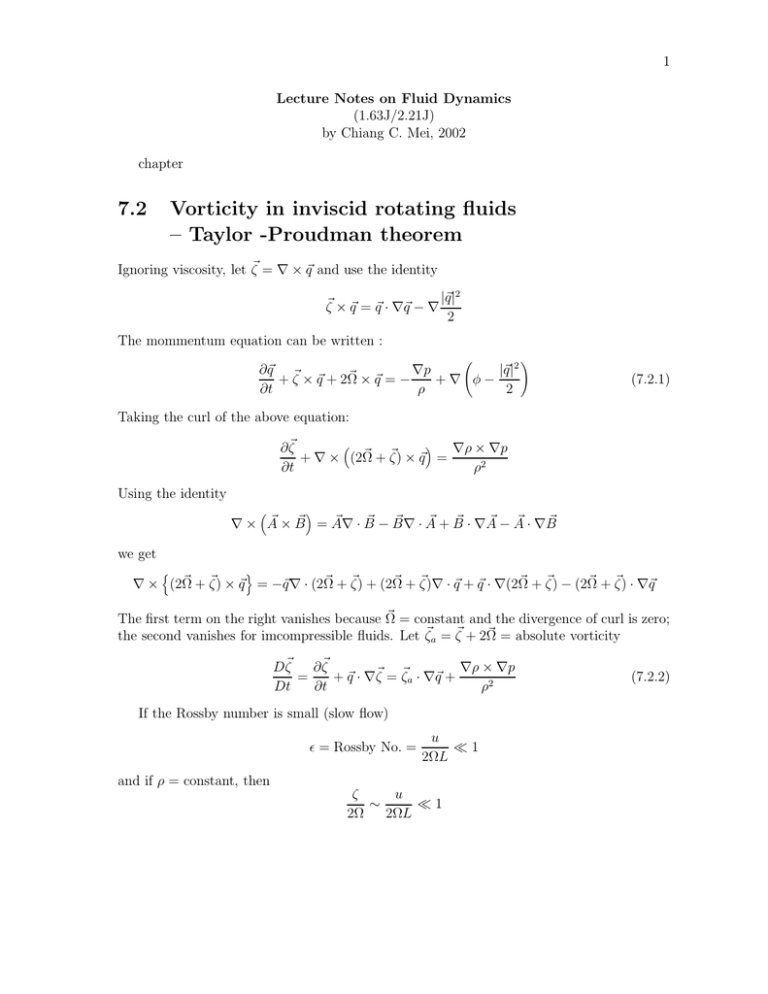
1 Lecture Notes on Fluid Dynamics (1.63J/2.21J) by Chiang C. Mei, 2002 chapter 7.2 Vorticity in inviscid rotating fluids – Taylor -Proudman theorem Ignoring viscosity, let ζ = ∇ × q and use the identity |q| ζ × q = q · ∇q − ∇ 2 2 The mommentum equation can be written : 2 ∂q × q = − ∇p + ∇ φ − |q| + ζ × q + 2Ω ∂t ρ 2 (7.2.1) Taking the curl of the above equation: ∂ ζ × q = ∇ρ × ∇p + ζ) + ∇ × (2Ω ∂t ρ2 Using the identity ×B = A∇ ·B − B∇ ·A +B · ∇A −A · ∇B ∇× A we get × q = −q∇ · (2Ω + (2Ω · q + q · ∇(2Ω − (2Ω · ∇q + ζ) + ζ) + ζ)∇ + ζ) + ζ) ∇ × (2Ω = constant and the divergence of curl is zero; The first term on the right vanishes because Ω = absolute vorticity the second vanishes for imcompressible fluids. Let ζa = ζ + 2Ω ∇ρ × ∇p D ζ ∂ ζ = + q · ∇ζ = ζa · ∇q + Dt ∂t ρ2 If the Rossby number is small (slow flow) = Rossby No. = and if ρ = constant, then u 1 2ΩL ζ u ∼ 1 2Ω 2ΩL (7.2.2) 2 and · ∇q = 0 2Ω (7.2.3) Th eflow is two dimensional and does not vary along the rotation vector. Let Ω be parallel to the z axis, then ∂q =0 (7.2.4) ∂z This has been proven edperimentally by Taylor, see sketch in Figure 7.2.1. Theorem 1 Taylor-Proudman theorem : A steady and slow flow in a rotating fluid is twodimensional in the plane perpendicular to the vector of angular velocity.
